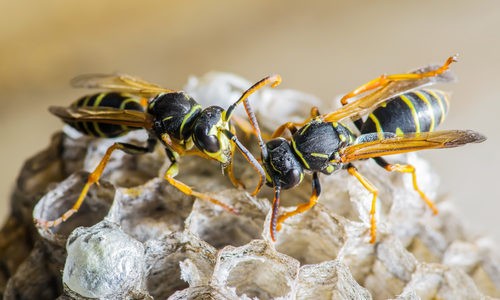Effective Pest Control for Wasp Infestations: Prevention and Treatment Methods

Introduction
Wasp infestations can be a nuisance and even pose a risk to human health. Understanding how to control and prevent wasp infestations is essential for a safe and comfortable living environment. In this article, we will explore different aspects of pest control for wasps, including identifying infestations, potential dangers, do-it-yourself methods, professional pest control services, and preventive measures.
Understanding Wasps
Before diving into pest control methods, it’s crucial to have a basic understanding of wasps. Wasps are flying insects that belong to the Hymenoptera order and are known for their distinctive narrow waists and stingers. There are various types of wasps, including paper wasps, yellow jackets, and hornets. Each type has unique characteristics and nesting habits, which influence the approach to pest control.
Identifying Wasp Infestations
Recognizing the signs of a wasp infestation is the first step in effective pest control. Common indicators include the presence of visible nests, an increase in wasp activity, and the sight of individual wasps around your property. Paper wasps often build umbrella-shaped nests, while yellow jackets tend to create nests underground or in wall voids. Identifying the specific type of wasp is helpful for selecting appropriate control methods. destruction nid de guepes 77
Dangers and Risks
While wasps play a role in the ecosystem, they can also pose dangers and risks to humans. Wasp stings are painful and, for some individuals, can lead to severe allergic reactions. Knowing the risks associated with wasps can help you prioritize pest control efforts and take necessary precautions. It’s important to understand the difference between a normal reaction to a wasp sting and an allergic reaction requiring immediate medical attention.
DIY Wasp Control Methods
If you discover a small wasp infestation, you may opt for do-it-yourself control methods. Several natural repellents can deter wasps and discourage them from building nests near your property. These include using essential oils, creating decoy nests, and maintaining a clean outdoor environment. It’s crucial to follow safety guidelines and be cautious when attempting DIY pest control to avoid aggravating the situation or getting stung.
Professional Pest Control Services
For larger or persistent wasp infestations, professional pest control services are often the most effective solution. Pest control experts have the knowledge, experience, and specialized equipment to handle wasp nests safely and efficiently. They can assess the severity of the infestation, identify the type of wasp, and apply appropriate treatments to eliminate the problem. Hiring professionals ensures the job is done correctly and minimizes the risks involved.
Preventing Wasp Infestations
Prevention is key to minimizing the likelihood of future wasp infestations. Wasp-proofing your property involves taking proactive measures such as sealing potential entry points, trimming vegetation near your home, and minimizing food sources that may attract wasps. By addressing conditions that are conducive to wasp nesting, you can reduce the chances of encountering these stinging insects.
Conclusion
Dealing with wasp infestations requires a combination of knowledge, prevention efforts, and appropriate pest control methods. Understanding the different types of wasps, identifying infestations, and being aware of the risks associated with wasp stings are essential steps in effective pest management.
For minor infestations, do-it-yourself methods can be employed using natural wasp repellents. Essential oils such as peppermint, clove, and lemongrass are known to repel wasps. Additionally, creating decoy nests or maintaining a clean outdoor environment can help deter these insects from nesting near your property.
